knowledge
Knowledge
SHOPPING INFORMATION
1. Are you a man or a woman?
Understanding whether you are male or female is important when it comes to analyzing skin type and choosing the right skincare products. Male and female skin have some key differences that affect skin care needs, such as:
- Men’s skin is usually thicker than women’s,
- Men produce more sebum, especially in the forehead area,
- Women’s skin stays more hydrated than men’s,
- The transepidermal water loss (TEWL) is nearly the same for both, meaning water loss through skin is similar,
- Men typically have larger pores than women,
- Skin pH levels can vary by area, but usually stay similar in both genders,
- Women have higher skin elasticity, meaning their skin may appear firmer and smoother.
Note: There may be other differences between men's and women's skin not covered here, but these are the most relevant for your skincare routine.
2. What is your skin type?
Understanding your skin type is essential for choosing the right skincare routine and products. While the basic categories of skin have stayed the same over time, the skincare industry now also looks at whether skin is dry or oily, sensitive or resistant, pigmented or non-pigmented, wrinkled or smooth, and normal to combination. This helps in finding the best skincare solutions for every individual.
Most people fall into one of these five main skin types:
- Dry skin: Dry skin often feels rough, flaky, scaly, or tight. It may appear dull and is more prone to irritation and fine lines.
- Oily skin: Oily skin looks shiny or greasy, especially in the T-zone (forehead, nose, and chin), and may have large pores and be prone to acne breakouts.
- Normal skin: Normal skin is balanced, not too oily or too dry, with small pores, smooth texture, and no major sensitivities or blemishes.
- Combination skin: This skin type has both dry and oily areas, typically, the T-zone is oily, while the cheeks may be dry or normal.
- Sensitive skin: Sensitive skin reacts easily to skincare products, allergens, or environmental changes. It can become red, itchy, or inflamed and needs gentle skincare products.
By identifying your skin type and using products that match it, you can improve your skin’s health and appearance. Learn more about your skin to choose a routine that supports glowing, healthy skin.
3. What is your age?
Age is a key factor in determining your skincare routine, along with your skin type and gender. Let’s explore how skin changes with age and what that means for your skincare needs.
Newborn skin produces very little sebum (skin oil) and sweat. Their skin tends to be dry and delicate because oil production begins during puberty. Gentle cleansers and light moisturizers are ideal for children, as their skin is thin, sensitive, and prone to irritation.
Teenage skin experiences big changes during puberty. This is when sebaceous, apocrine, and eccrine glands become active, increasing oil production. This can cause acne, body odor, and even allergic reactions. Around age 40, sebum production begins to decline, and during menopause (typically around age 50), women often experience a sharp decrease in oil levels, making skin drier and more sensitive.
Around age 60 and above, skin enters the geriatric phase. Aging skin becomes fragile, thin, and more likely to bruise due to reduced collagen and elastin. This stage is often affected by senile purpura, where thick moisturizers may actually worsen bruising. The skin may appear dry, not because of hydration levels, but because it doesn’t shed dead skin cells properly. Elderly skincare should focus on exfoliation and deep moisturization to restore softness and flexibility.
By understanding how your skin ages, you can choose the right anti-aging skincare products and techniques that meet your skin’s specific needs.
4. What is Skin Care & Why Is It Important?
Skincare is the daily practice of maintaining healthy, clear, and balanced skin. It involves choosing the right routine based on your skin type and its unique concerns or symptoms. Each skin type, whether dry, oily, combination, sensitive, or normal, requires specific products and ingredients to address its needs.
Even if you have normal skin, which is typically the least problematic, it still needs a daily routine: cleansing, moisturizing, and protecting. In the morning, cleanse with a gentle cleanser or alcohol-free toner, followed by a lightweight, non-petroleum moisturizer. At night, cleanse again and use an oil-based cream for protection or a water-based product for better absorption and hydration.
For dry skin, a rich, hydrating moisturizer is essential, ideally applied when the skin is damp to seal in moisture. Choose fragrance-free, alcohol-free formulas that are thick and occlusive. Regular gentle exfoliation can help moisturizers penetrate better and improve skin texture.
Oily skin benefits most from exfoliation, especially with ingredients like Salicylic Acid (BHA), which cleans both the surface and inside the pores. This helps control oil production, reduce acne, and minimize shine. Sun protection is crucial for oily skin to prevent signs of aging and reduce post-acne redness.
Combination skin should follow a mix of dry and oily skincare routines, treating each area accordingly, for example, using mattifying products in the T-zone and hydrating products on dry areas.
Sensitive skin requires extra care. It’s more prone to irritation, so it’s best to consult a dermatologist before using any new products. Always do a patch test to ensure your skincare products won’t cause allergic reactions or inflammation.
The 3 Key Steps of an Effective Skincare Routine
1. Cleansing: Cleansing removes dirt, oil, makeup, and pollutants that clog pores and cause breakouts or dullness. Clean skin allows better absorption of skincare products and is the foundation for glowing, healthy skin.
2. Nourishing
This step includes two parts:
- Hydration: Keeps skin plump and maintains moisture levels. Use hydrating serums or moisturizers daily.
- Target Serums: Address specific concerns like acne, dullness, fine lines, pigmentation, or inflammation using actives like:
- Salicylic Acid – acne
- Niacinamide – oil control and pores
- Hyaluronic Acid & Ceramides – hydration and skin barrier
- Vitamin C – dullness and brightening
- Retinol – anti-aging
- Alpha-Arbutin – pigmentation
3. Protecting
Protect your skin by:
- Moisturizing: Locks in hydration and shields skin from environmental stress. A good moisturizer includes:
- Occlusives – prevent water loss by forming a barrier (e.g., petrolatum)
- Humectants – draw moisture into the skin (e.g., glycerin, hyaluronic acid)
- Emollients – smooth and soften by filling gaps between skin cells (e.g., squalane, esters)
Sun Protection: Daily use of broad-spectrum sunscreen (SPF 30 or higher) is vital. UV exposure can cause sunburn, premature aging, skin cancer, and hyperpigmentation. Always apply sunscreen, even on cloudy days or indoors near windows.
References
- Rahrovan, S., Fanian, F., Mehryan, P., Humbert, P., & Firooz, A. (2018). Male versus female skin: What dermatologists and cosmeticians should know. International Journal of Women’s Dermatology, 4(3), 122–130. https://doi.org/10.1016/j.ijwd.2018.03.002
- Baumann, L. (2008). Understanding and treating various skin types: The Baumann Skin Type Indicator. Dermatologic Clinics, 26(3), 359–373. https://doi.org/10.1016/j.det.2008.03.007
- Draelos, Z. D., & Thamen, L. A. (2006). Cosmetic formulation of skin care products. In Cosmetic Science and Technology Series (Vol. 30, pp. 27–29).
Mohd Noor, N., Muhamad, N., Sahabudin, N., & Mustafa, Z. (2018). Development of skin care routine support system. Advanced Science Letters, 24, 7830–7833. https://doi.org/10.1166/asl.2018.13026




